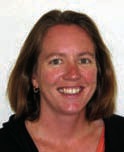 Three or, perhaps, four significant innovations characterized the "Physics of Climate Change" program: (1) it was the first KITP program to focus on climate and to investigate the relevance of theoretical physics to what may well be the 21st century’s overriding scientific challenge; (2) it inaugurated the first collaboration between two NSF-funded scientific institutes—KITP and the National Center for Ecological Analysis and Synthesis (NCEAS) that have co-existed in proximity within the same university for decades; (3) it yielded the discovery of an insight "Fire in the Earth System," whose significance is suggested by its speedy publication in Science and the attendant flurry of notice in the popular media;(4) it catalyzed the probable advent, as the "Fire" article signals, of a new interdisciplinary endeavor that might come to be called "pyrogeography."
Three or, perhaps, four significant innovations characterized the "Physics of Climate Change" program: (1) it was the first KITP program to focus on climate and to investigate the relevance of theoretical physics to what may well be the 21st century’s overriding scientific challenge; (2) it inaugurated the first collaboration between two NSF-funded scientific institutes—KITP and the National Center for Ecological Analysis and Synthesis (NCEAS) that have co-existed in proximity within the same university for decades; (3) it yielded the discovery of an insight "Fire in the Earth System," whose significance is suggested by its speedy publication in Science and the attendant flurry of notice in the popular media;(4) it catalyzed the probable advent, as the "Fire" article signals, of a new interdisciplinary endeavor that might come to be called "pyrogeography."
One of that new field’s pioneers is physicist Jean Carlson, the head of the UCSB complex systems group, who served as a KITP program organizer and an author of the "Fire" article. Her role is pivotal because her efforts to model fire had already led her to tap NCEAS expertise so that she had the institutional experience and acumen to enable the highly productive interaction between physicists and ecologists.
The "Climate" program’s overall organizer, Brad Marston, and the leaders of the ecology group, David Bowman and Jennifer Balch, all spoke about the challenges to collaboration posed by the very different "styles" of physics and ecology research.
Of the "Fire" article, Carlson said, "It is an attempt to make a public statement on the importance of integrating fire into climate change. That effort is challenging because climate models are investigated on spatial and temporal scales that are too coarse to account for individual fires or the extreme weather events that factor heavily into fire risk." But fires, she noted, emit large amounts of carbon in a short amount of time, and "play a central role in catalyzing ecological-type conversion on landscapes."
‘HOT’ to Handle Fire
To investigate common features of complex phenomena such as fires and to identify interplays among variations in the environment and tradeoffs in resilience and adaptation, Carlson, in collaboration with Caltech’s John Doyle, has devised a research protocol called "Highly Optimized Tolerance" or "HOT" for short.
Carlson’s and Doyle’s work shows that basic mechanisms which underlie evolution and system organization in changing environments can be mechanisms for "heavy tailed distributions." For fires, this leads to a power law relationship between the frequency and size of fire. The result is, she said, "Most fires are small, but most of the trees are burnt in the few largest fires." Such findings, in turn, enable more informed decision-making about how to deploy resources to respond to wildfires.
HOT affords, Carlson said, "a particular way of thinking about the origin of variability in an organized system. The theory has been applied to systems that have been deliberately engineered, like communication and transportation systems, as well as systems that adapt over time by natural mechanisms, like an ecosystem and a fire regime. The trade-off that comes with that organization is at the heart of the HOT perspective on complexity."
This kind of system, Carlson said, "can be characterized as Robust, yet Fragile [RYF]—robust and resilient to common variations, yet fragile and vulnerable to rare events. One signature of RYF is a power law, which may occur even in optimized systems.
"Another important fragility," she said, "that occurs in a system tuned to its environment pertains to the system’s natural sorting mechanisms, which may not be able to keep up with a rapid change in the environment. This failure leads to even larger catastrophic events whereby the system finds itself in unfamiliar territory. This chain reaction is particularly important for climate change."
Fire regimes and ecosystems may, in other words, be tuned to one another, but extraordinary input—such as humans firing off large swaths of rainforest or extraordinary climate change itself—tends, in turn, "to give rise to large system fragility."
What makes climate change "extraordinary"? Said Carlson, "Recent, human-induced changes are not slow enough to be consistent with the natural time scales for adaptation associated with Earth system processes—i.e., burning down rain forests and increasing emissions may lead to rapid changes in weather, and temperature, which have cascading effects, disrupting what would be a natural fire regime."
